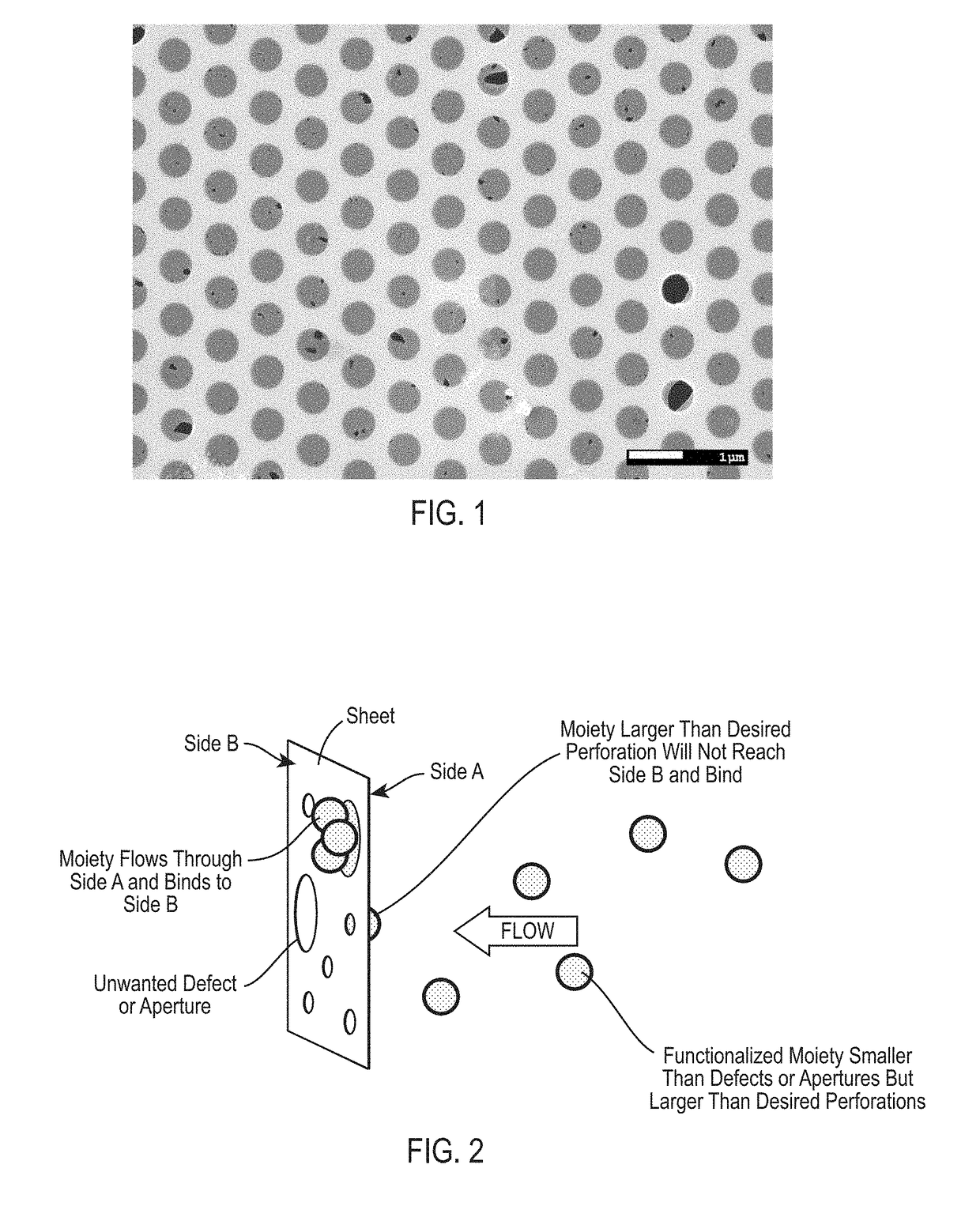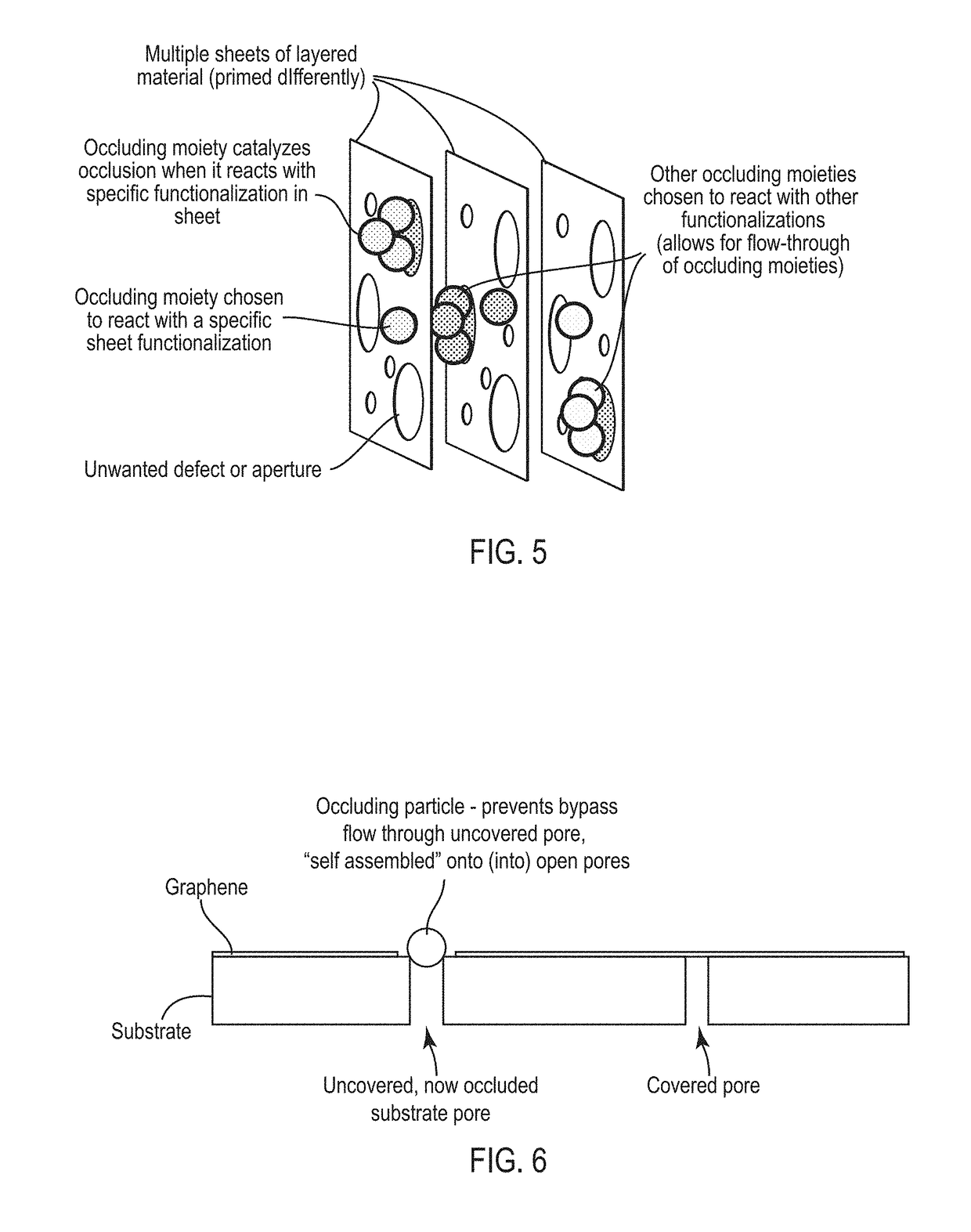Method for making two-dimensional materials and composite membranes thereof having size-selective perforations
- Summary
- Abstract
- Description
- Claims
- Application Information
AI Technical Summary
Benefits of technology
Problems solved by technology
Method used
Image
Examples
Embodiment Construction
[0046]A variety of two-dimensional materials useful according to inventive concepts disclosed herein are known in the art. In various embodiments, the two-dimensional material comprises graphene, carbon nanomembranes (CNM), molybdenum disulfide, or boron nitride (specifically the hexagonal crystalline form of boron nitride). In an embodiment, the two-dimensional material is a graphene-based material. In more particular embodiments, the two-dimensional material is graphene. Graphene according to the embodiments of the present disclosure can include single-layer graphene, multi-layer graphene, or any combination thereof. Other nanomaterials having an extended two-dimensional molecular structure can also constitute the two-dimensional material in the various embodiments of the present disclosure. For example, molybdenum sulfide is a representative chalcogenide having a two-dimensional molecular structure, and other various chalcogenides can constitute the two-dimensional material in th...
PUM
| Property | Measurement | Unit |
|---|---|---|
| Fraction | aaaaa | aaaaa |
| Fraction | aaaaa | aaaaa |
| Fraction | aaaaa | aaaaa |
Abstract
Description
Claims
Application Information
 Login to View More
Login to View More - R&D
- Intellectual Property
- Life Sciences
- Materials
- Tech Scout
- Unparalleled Data Quality
- Higher Quality Content
- 60% Fewer Hallucinations
Browse by: Latest US Patents, China's latest patents, Technical Efficacy Thesaurus, Application Domain, Technology Topic, Popular Technical Reports.
© 2025 PatSnap. All rights reserved.Legal|Privacy policy|Modern Slavery Act Transparency Statement|Sitemap|About US| Contact US: help@patsnap.com



